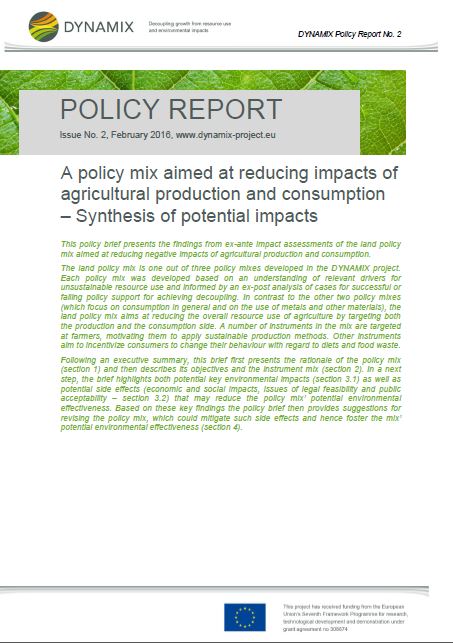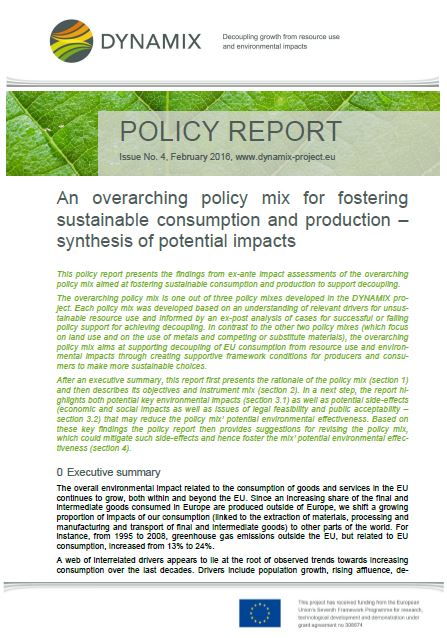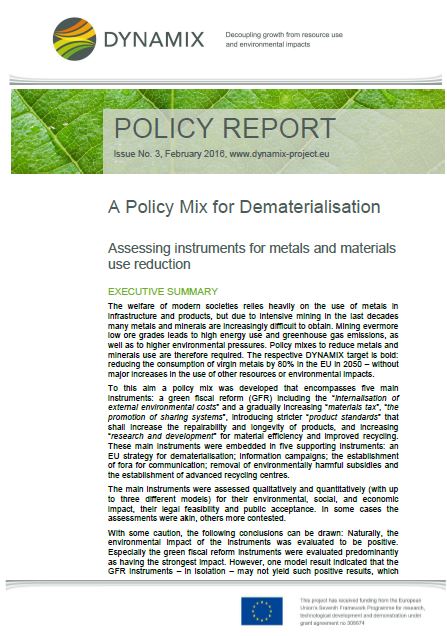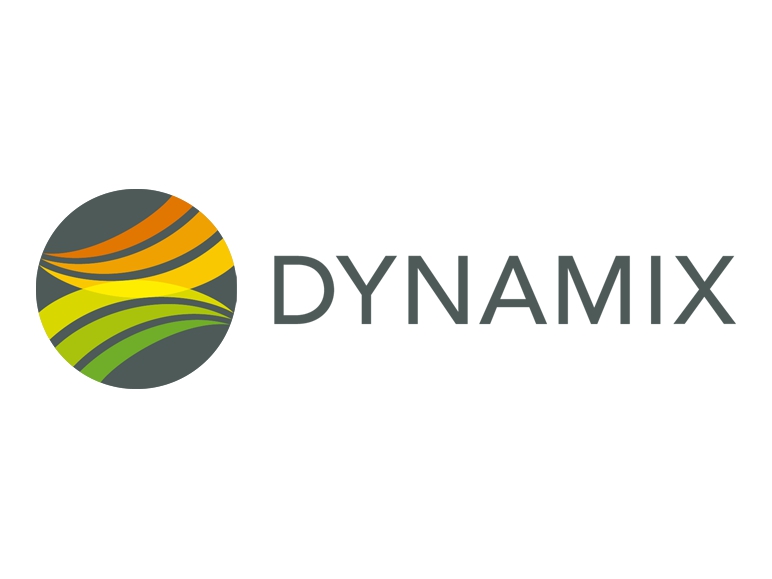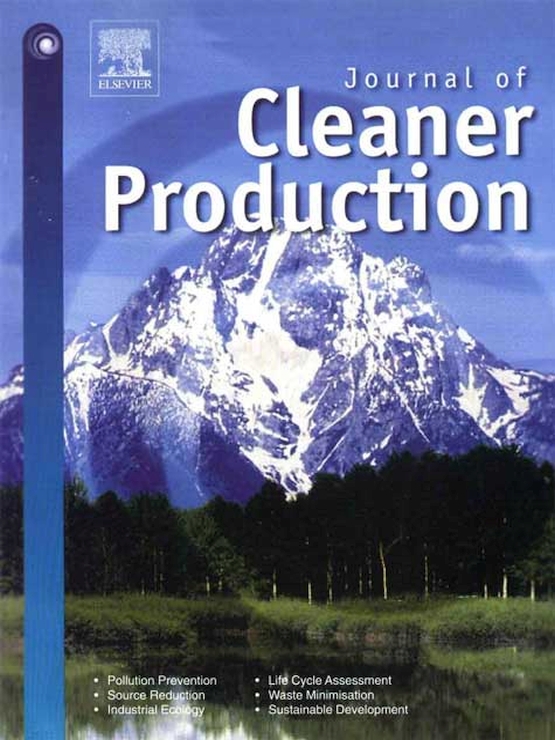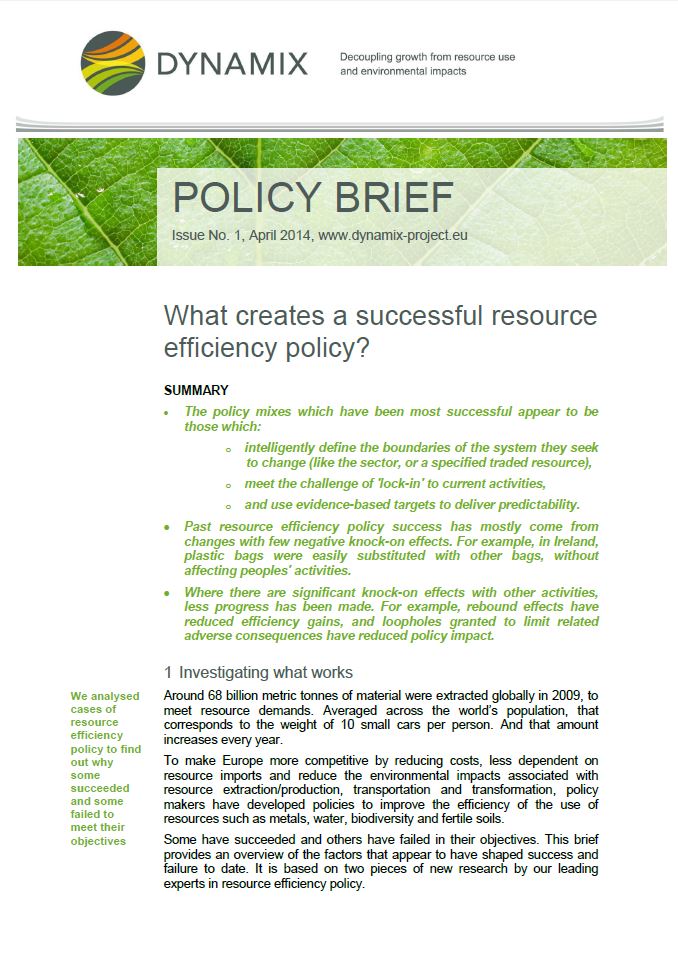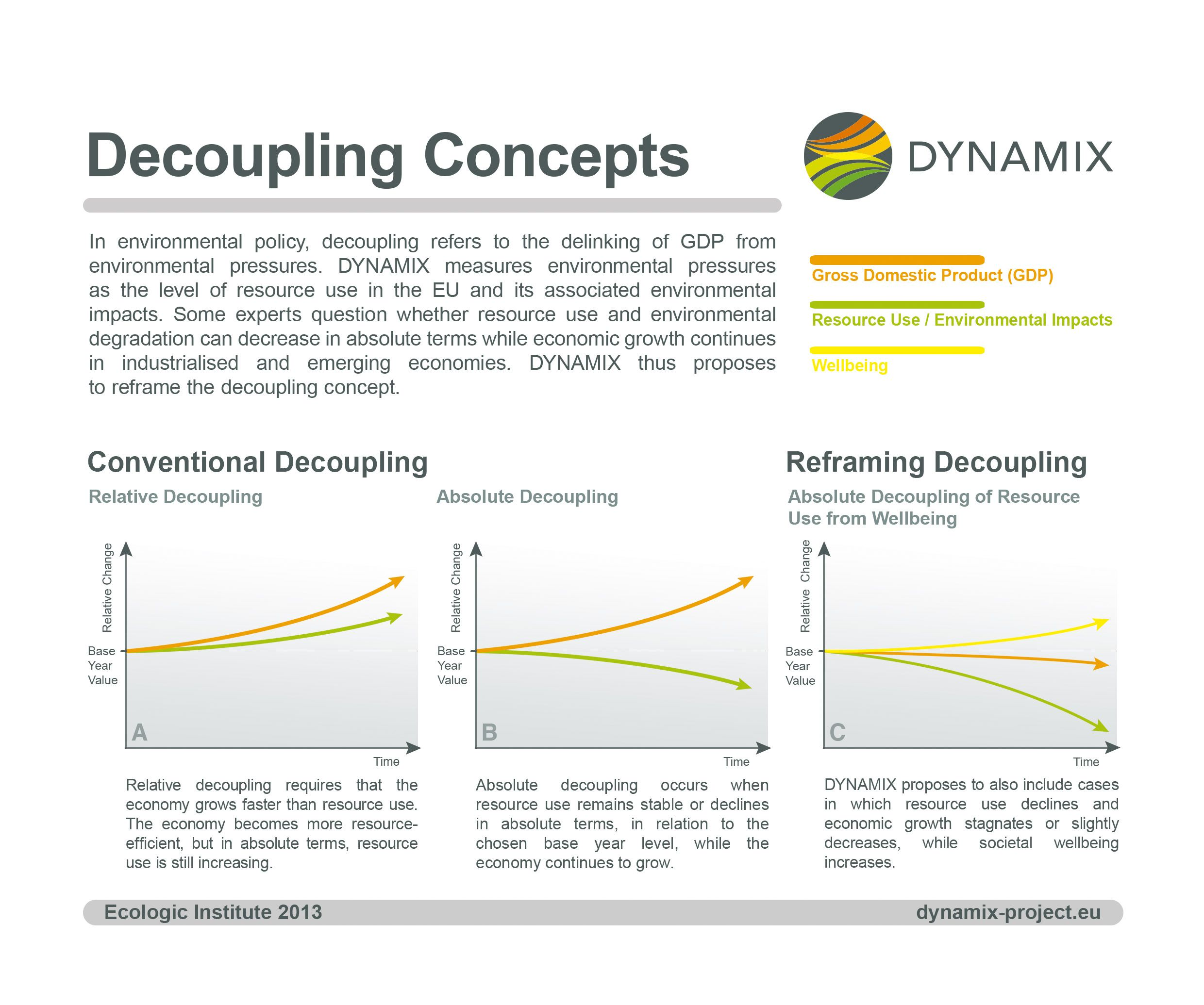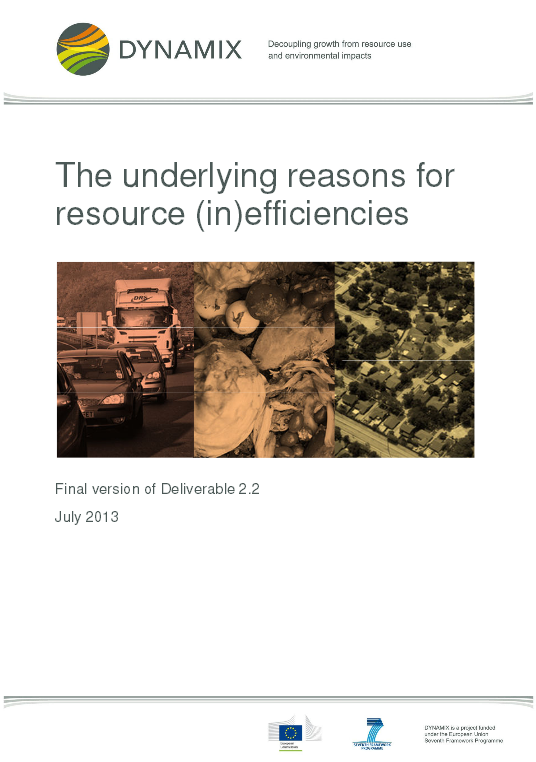
How Will We Know if Absolute Decoupling Has Been Achieved?
Common Approach for DYNAMIX
- Publication
- Citation
Umpfenbach, Katharina 2013: How will we know if absolute decoupling has been achieved? Common Approach for DYNAMIX. Ecologic Institute, Berlin.
The objective of the DYNAMIX project is to identify policy mixes to absolute decoupling of economic growth from resource use and its associated environmental impacts. This study by Ecologic Institute's Katharina Umpfenbach serves to clarify the shared key assumptions that are used throughout the project and ensure their consistent application. It goes on to present a framework for assessing the effectiveness, sustainability, and cost-effectiveness of EU policy mixes aimed at achieving absolute decoupling. The Common Approach stems from two main roots: an analysis of literature and policy documents, and intense discussion, both within the consortium and with stakeholders. The study is available for download.
Rendering a vision for a resource-efficient EU more concrete, DYNAMIX proposes five pragmatic key targets for 2050 as a benchmark against which to assess the effectiveness of policy interventions. Our aim is to contribute to the ongoing debate at EU level about appropriate targets, indicators and ambition levels.
Proposed resource efficiency policy targets for 2050:
- consumption of virgin metals: -80 % compared to 2010 measured by RMC in the EU representing scarcity of metals and environmental impacts caused by extraction, refinement, processing and disposal of metals;
- greenhouse gas emissions; 2 tonnes CO2-equivalent per capita and year (measured as footprint to reflect embedded emissions and as EU-internal emissions) representing climate change impacts of greenhouse gas emissions through energy use as well as agricultural and industrial processes;
- consumption of arable land: zero net demand of non-EU arable land representing, as a rough approximation, impacts of biomass production on soil quality, water quality and biodiversity;
- nutrients input: reducing nitrogen and phosphorus surpluses in the EU at the level best available technique can achieve representing impacts of agricultural production on marine and freshwater quality as well as soil quality;
- freshwater use: no region should experience water scarcity representing impacts of resource use on freshwater availability.
A first version was presented to stakeholders from policy, science, business and civil society and to the project's Advisory Boards at DYNAMIX's first Policy Platform in March 2013. The document will be regularly amended to reflect new insights.



